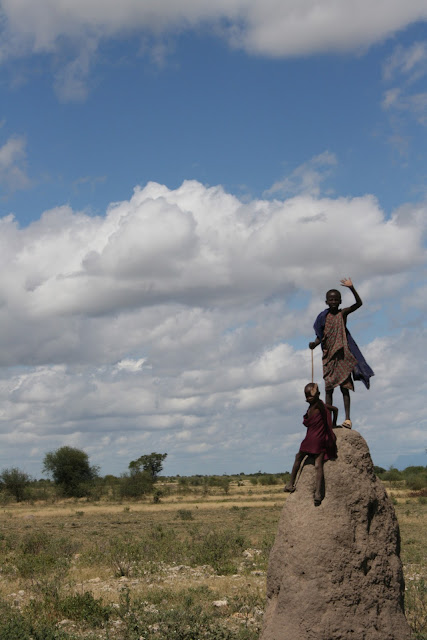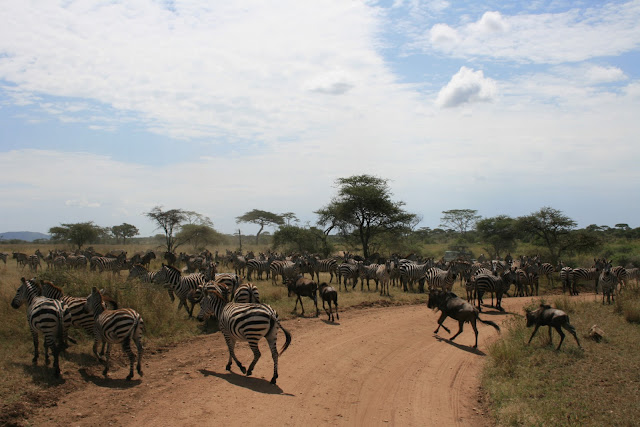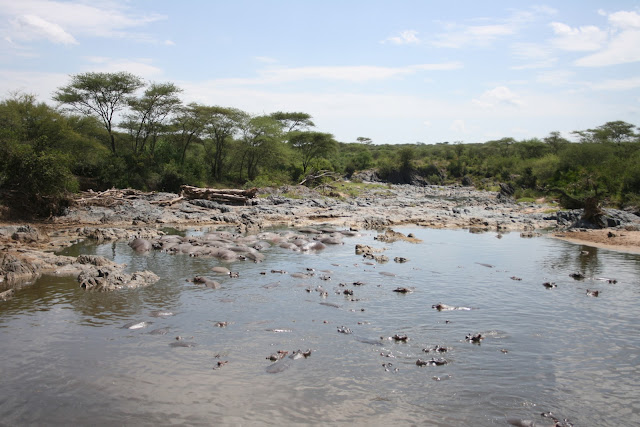You would definitely draw blank looks from your climb or safari guides in Tanzania if you brought up the subject of World War One around the campfire or in the mess tent. Especially in the Kilimanjaro area. It might come as a surprise to know that some of the most iconic battles of the War were fought in the area.
First there was the “The Battle of Kilimanjaro” that took
place in November 1914 and then there was the “The Battle of Kahe” that took
place in March 1916, both during East African Campaign of World War I. Not a lot of people know this but the South
African forces played a big role in the 1916 battle.
The Battle of
Kilimanjaro (1914)
The Battle of Kilimanjaro at Longido took place in German East Africa in November 1914 and was an
early skirmish during the East African Campaign of
the First World War.
The British conquest
of German East Africa was planned as a two-pronged invasion of the German
colony, at (1) the port town of Tanga and (2) the settlement Longido on the
slopes of Mount Kilimanjaro. The plan was designed at a Mombasa
staff conference with Major General A. E. Aitken
in overall command. The first and largest prong was to be the capture of Tanga
with the British Indian Expeditionary Force "B"
of some 8,000 men in two brigades.The second prong would be an attack on the German defenses at Longido in the north around Kilimanjaro, then swing south and seize Neu Moshi, the western terminus of the Usambara or Northern Railroad. "The objective for the capture of Longido was to squeeze the German Schutztruppe in the upper end of a two-hundred-mile pincer."[2] The region was a major German settlement area with established plantations of sisal, coffee and other cash crops at the northern edge of the Usambara highlands. Since small German raiding parties had already begun to ambush British detachments and attack the Uganda Railway, the destruction of German forces in the area bordering British East Africa was a key objective of the British plan of operation. “The strategy was faultless on paper.”[3]
Source: bridgemanart.com via African on Pinterest
By late October 1914 the British Indian Expeditionary Force "C" gathered with 4,000 men near the border of British and German East Africa, commanded by Brigadier General J. M. Stewart. The brigade included colonial volunteers who called themselves East Africa Mounted Rifles.[4] Flawed intelligence reports estimated the German military presence in the region at 200 men; however, there were 600 askaris in three companies plus the colonial volunteers of 8th Schützenkompagnie [rifle company] of 86 young Germans on horseback.[5]
Source: iwm.org.uk via African on Pinterest
On 3 November 1914 some 1,500 Punjabis of the British force came up the slope at night near Longido and, at daylight in the morning fog were caught in the crossfire of a strong German defensive position. The large force of Indian infantry fought well when counterattacked, however, during the day the British attackers made no headway, but suffered substantial casualties.
By mid-morning, a mounted patrol of the 8th Rifle Company
ambushed a British supply column; roughly 100 mules carrying water for the
troops were stampeded away by the German horsemen. Some of the carriers in the
column panicked and dropped their loads leaving food, ammunition and equipment
behind. The British officers with their now widely scattered troops waited
until darkness, determined their situation to be untenable, pulled out and down
the mountain and marched back to British East Africa having accomplished nothing.[6][7]
This defeat of the invaders by a force less than half their size cooled the
enthusiasm for war especially among the British colonial volunteers.[8]
Source: iwm.org.uk via African on Pinterest
The northern prong attack at Longido had been intended as
little more than a diversion. "The main effort was [the] ambitious
amphibian assault on the port of Tanga" that commenced on 2 November 1914.[9]
With the northern prong accounted for, the askari companies were shuttled by
rail to Tanga to assist in opposing the southern prong.[10]
The Battle of Kahe
(1916)
The Battle of Kahe was fought during the East African Campaign of World War I.
It was the last action between German and Entente forces before the German
retreat from the Kilimanjaro area. British and South African forces surrounded German positions at Kahe, south of Mount
Kilimanjaro. Entente forces inflicted heavy casualties [11]
and captured large German artillery pieces while receiving comparably little
casualties. German forces retreated from there, further into the interior of
the colony.
More on The Battle of Kahe and the battles around Kilimanjaro:
- The Advance Beyond Kilimanjaro German East Africa (now Tanzania), March 1916 Saturday, 21 April 2012 15:35 Harry Fecitt MBE TD http://www.westernfrontassociation.com/great-war-on-land/75-other-war-theatres/2406-the-advance-beyond-kilimanjaro-german-east-africa-now-tanzania-march-1916-.html
The Old and the Bold British & German East Africa January to May 1916 http://www.25throyalfusiliers.co.uk/british_german_east_africa_1.html
Indian Volunteers in the Great War East African Campaign Saturday, 02 January 2010 15:22 Harry Fecitt MBE TD http://www.westernfrontassociation.com/great-war-on-land/75-other-war-theatres/1072-indian-volunteers-in-the-great-war-east-african-campaign.html
Notes
- ^ the description of this Bundesarchiv image identifies those pictured as "planters from the Kilimanjaro region." In all probability these volunteer troopers were members of the mounted 8th Schützenkompagnie [rifle company] composed of settlers, their sons, plantation administrators, etc., from the Usambara and Kilimanjaro area of German East Africa.
- ^ Miller, Battle for the Bundu, p. 54
- ^ Miller, p. 55
- ^ Farwell, The Great War in Africa, p. 161
- ^ Hoyt, Guerilla, p. 55
- ^ Hoyt, p. 56
- ^ Miller, p. 72
- ^ Farwell, p. 162
- ^ Farwell, p. 163
- ^ Miller, p. 61
- ^ Thompson, E S (1916). A Machine Gunner's Odyssey Through German East Africa: The Diary of E S Thompson, Part I. 17 January - 24 May 1916.
References:
Source: old-print.com via African on Pinterest













































